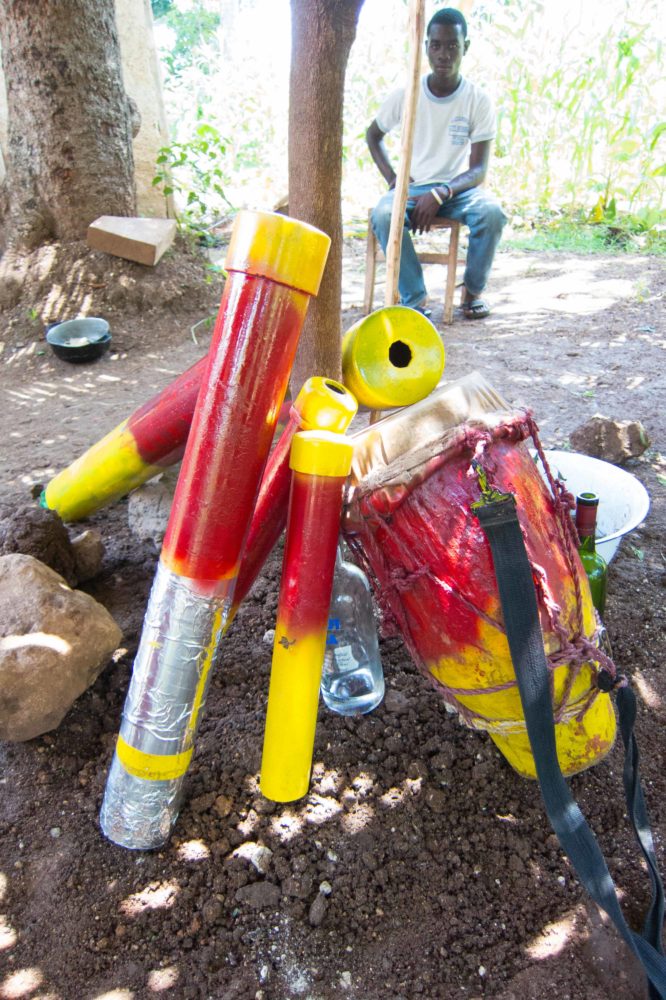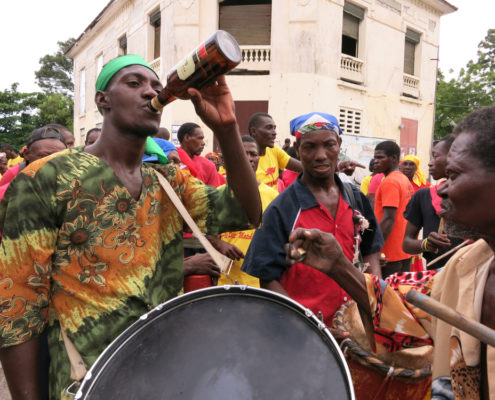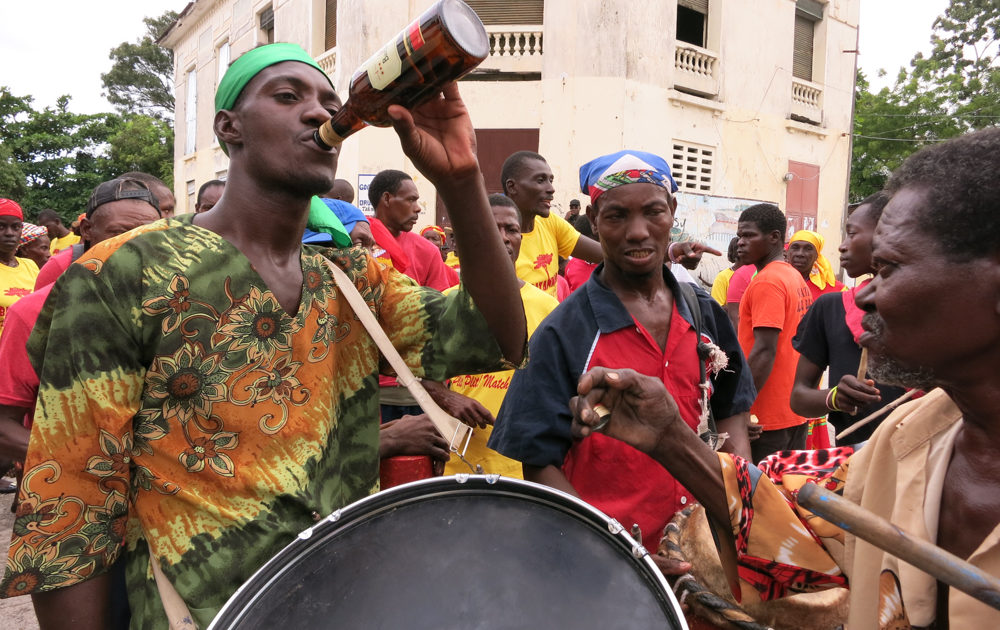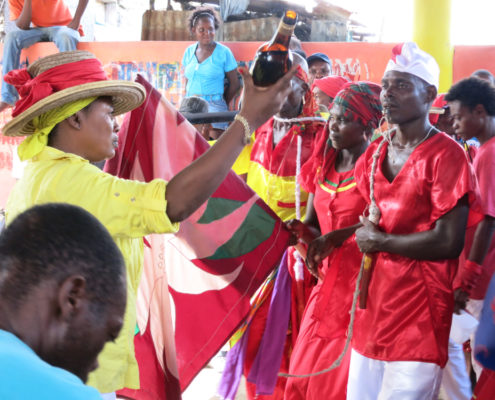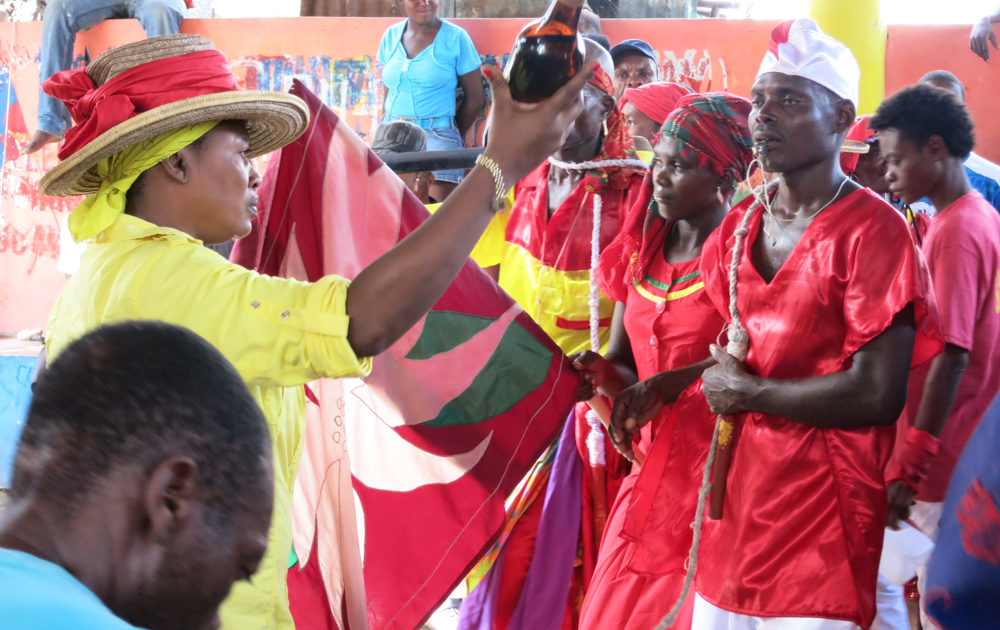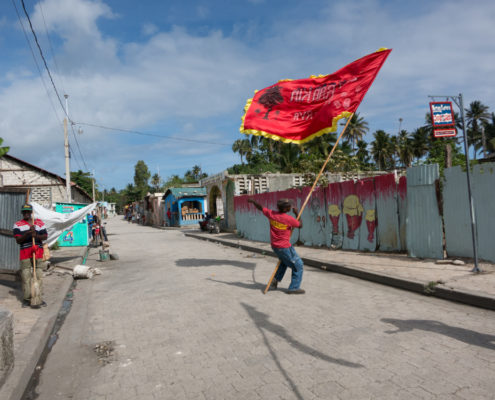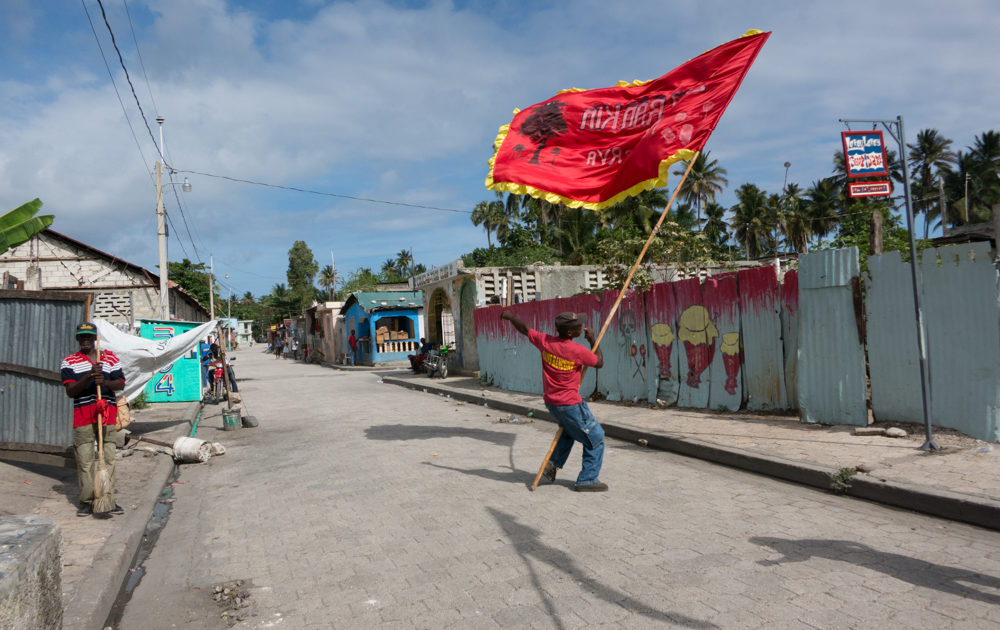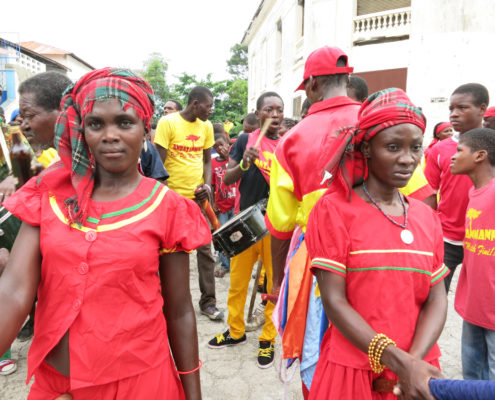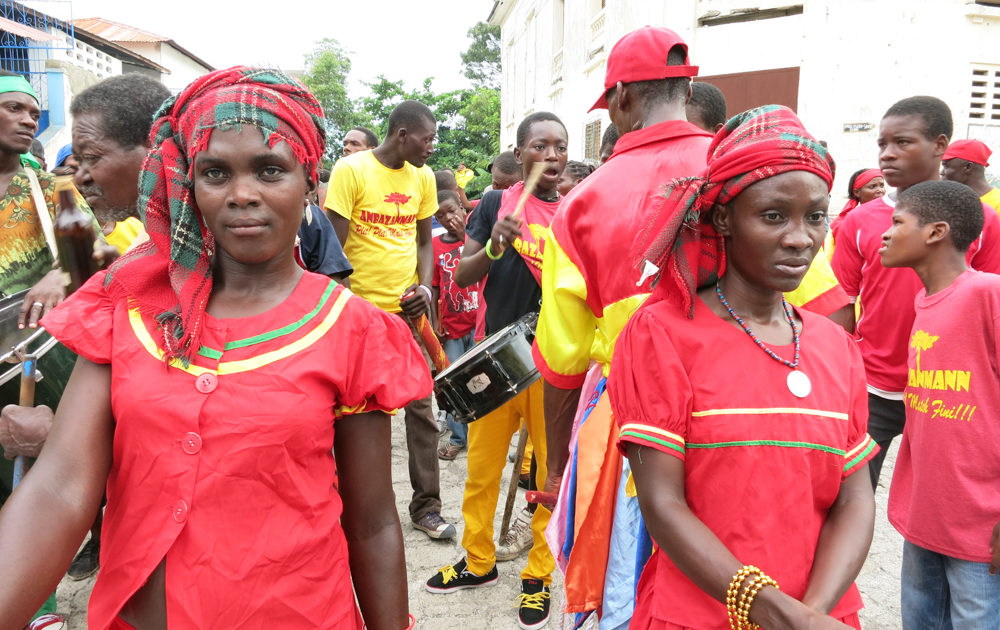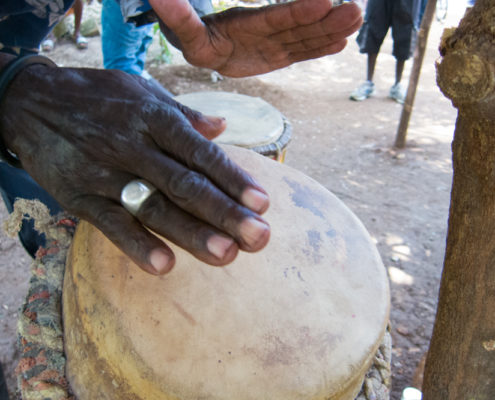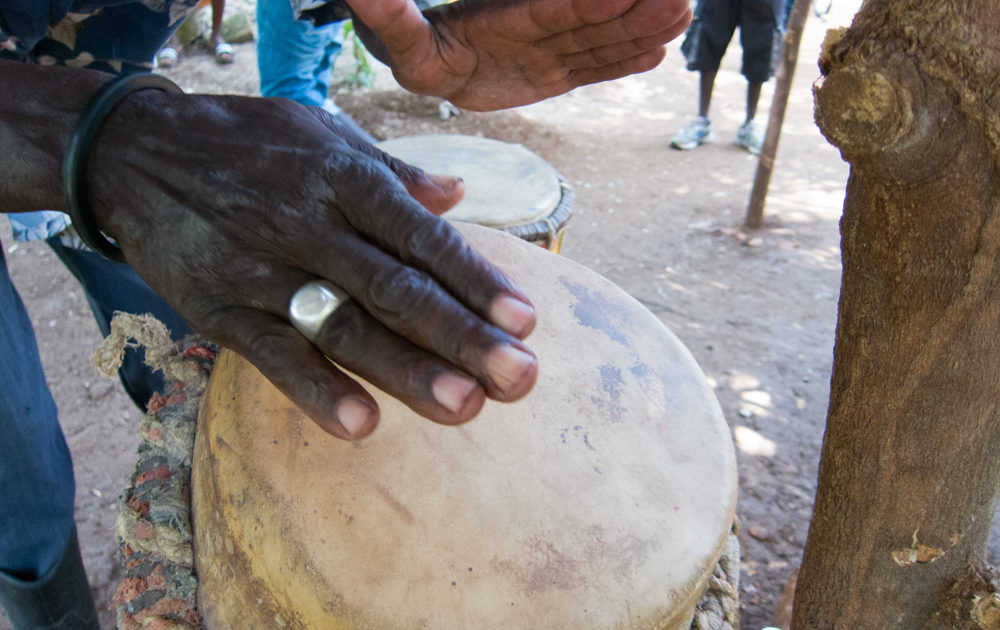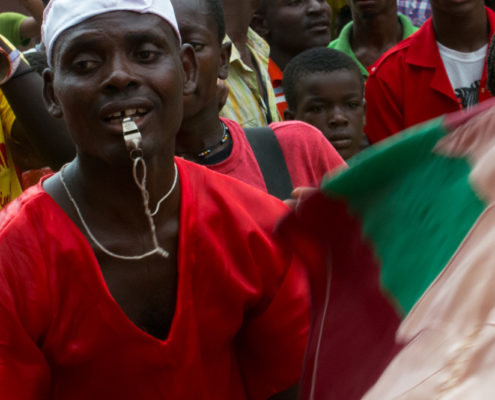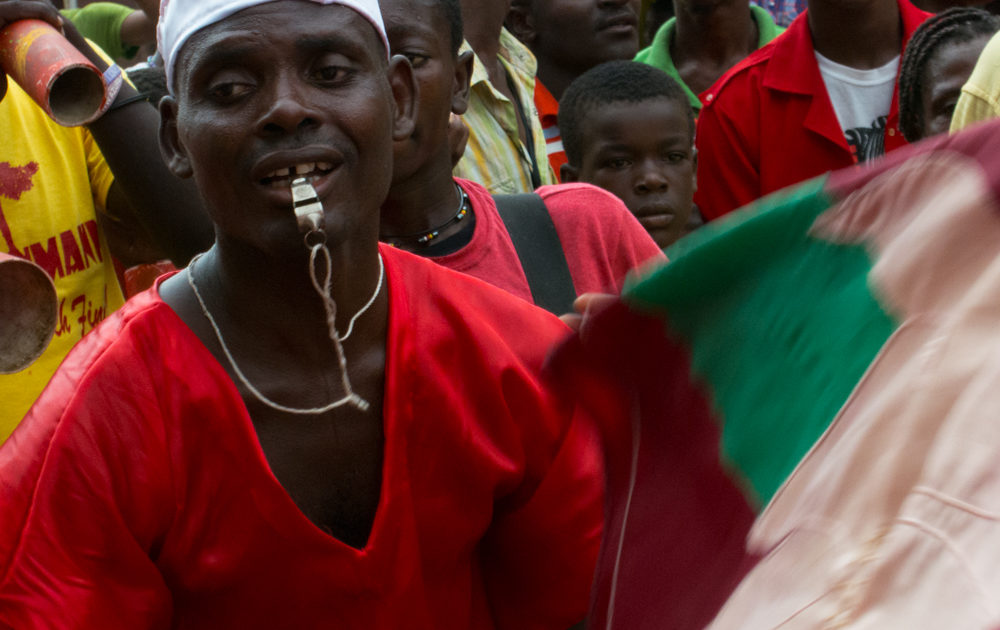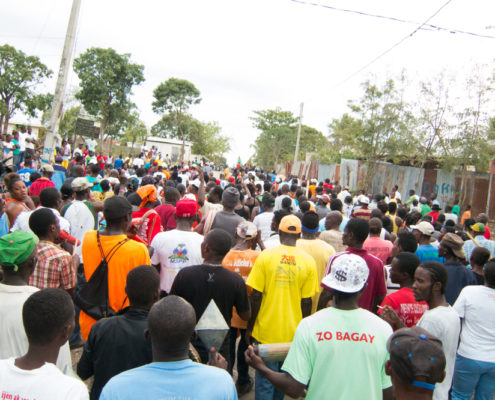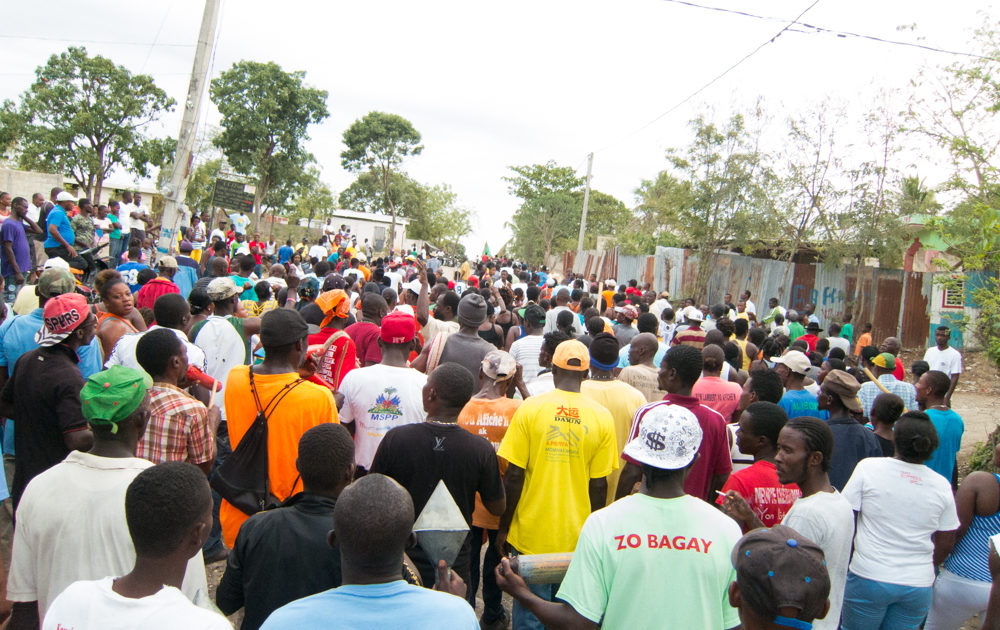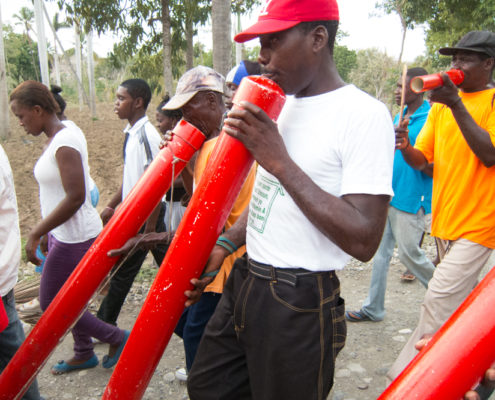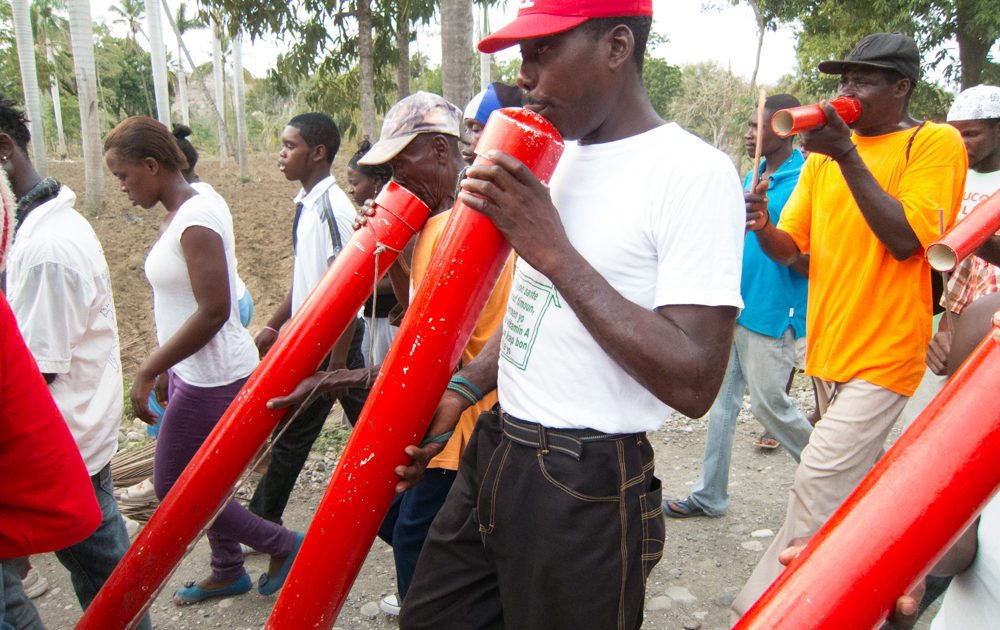Banners and garlands festoon the roadway leading to the tonel, or headquarters, of rara Laflè Modèl, in Lafond,
a few kilometers north of Jacmel on the banks of the River Gosseline. The banner reads: pa pè anyen,
meaning “we’re not scared of anything,” and Mesi Marenn, “Thank you, my queen!”
Welcome
Welcome to Jacmel Rara. This site is the multi-media online expression of an In The Field Recording project to document and share one of Haiti’s many vital and exciting cultural traditions, the annual sorties made by innumerable marching bands during the post-carnival, pre-Easter lenten season. The site includes documentary photography, audio and inevitably subjective text.
In the ten days preceding Easter 2014, I visited Jacmel with the principal intention of capturing high-quality digital stereo audio of raras in the field. I recorded, filmed and photographed with a half-dozen rara collectives, representing a range from an essentially unbroken 80-year-old family tradition to opportunistic, motley and impromptu collections of revelers that may assemble only for one night of marching and partying. In Lent of 2015 I returned, joined by Alex Wolfe and his video camera, concentrating my efforts on two groups. Laflè Modèl of Kalafon and L’Oraj of Dlope. Both these trips were made possible through the extraordinarily generous support of Owsley Brown Presents.
What is Rara?
In its most traditional form, a rara is fundamentally an ambulatory vodou ceremony. In Haiti, during the period between Mardi Gras (Shrove Tuesday) and the Resurrection, pedestrian bands generally comprised of the congregants of a peristil, or vodou temple, leave the sanctity and security of their home base to march out through their neighborhood and overland to fulfill the exigencies of the spirits. These long, half-jogged, half-marched obligatory parades or, perhaps more aptly, pilgrimages, follow routes prescribed by the supernatural. The rara visits sites of historic and mystical significance to the family or lakou (the extended family compound, its lands, cultivations and community), fulfill annual commitments to the deceased, and bestow honor on neighboring houngans, or vodou priests, both living and dead. A traditional rara is led through the countryside (and in the ever-urbanizing context of Haiti, the city) by two queens (renn) and a kolonel, who wields a whip both to maintain discipline and to salute or call the spirits by cracking it. In theory nobody marches in front of the colonel except an escort of spirits, and an important part of his job is to keep this space clear for their invisible presences to occupy.
The kolonel of Rara Le Pays, “the Country,” cracks his whip as he passes a crossroads on the outskirts of Jacmel,
marshalling the space in front of the marching crowd.
Rara refers to the the music, the ritual, and the tradition, all at once. Sonically, a traditional rara has three essential components: banbou, drums and vocals. The bass notes are played on five single-note tubes, originally fashioned from hefty diameters of bamboo, but now typically cut from lengths of PVC pipe of various diameters and lengths. These sound something like a single-note didgeridoo. In vodou ceremonies, the lwa are generally always called with three drums; in a rara the two smaller of these drive the rhythm, the largest being presumably too impractical to carry over the long distances often travelled. The vocals, often simple phrases repeated, like choruses, are sung by the marching crowd. Virtually all of Laflè Modèl’s songs are direct derivations or expressions of chante lwa, songs to the spirits, taken from the vodou liturgy.
Varying diameters and lengths of PVC pipe, each with a mouthpiece made by drilling a hole in the endcap of this common
plumbing-supply item, lean against the poto-mitan, or ritual center-pillar, at the gathering-place of rara L’Oraj,
awaiting the arrival of the musicians.
For the core participants, “taking the rara out” is a mystical and religious obligation. Between paying the musicians for their many lenten sorties, the acquisition of rum, cane liquor, and the provisioning of “uniforms,” (now, around Jacmel at least, typically color-coordinated t-shirts furnished by sponsoring politicians, their names printed on the back) it can be punitively expensive and a source of much stress. But for most of the members of the often immense crowds that accompany a rara in full swing, the joyous, communal experience of singing and dancing and half-stepping through their own neighborhood has obvious benefits in terms of solidarity and release. People, in the often-used kreyol phrase, pran plezi ladan, take pleasure in it. For the musicians and other rara “professionals”, as well as the streams of vendors pushing wheelbarrows full of ice and beer and rum and peanuts and cigarettes, rara is both a social and a business opportunity.
(click on any image below to enter slideshow/lightbox; follow the navigation links to delve deeper)




